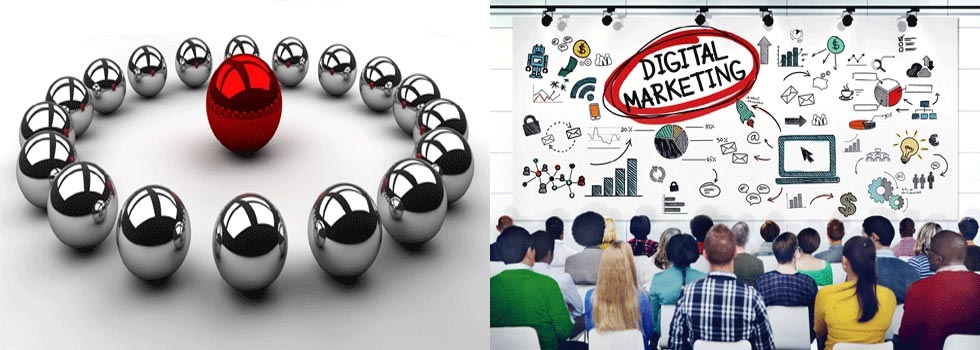Date: 28th July, 2016: Seven Ecommerce Trends you need to Understand Now
Key Speaker: Ms. Krista Garcia (Analyst, e-Marketer)
This report talks about the seven e-commerce trends that have been identified in this webinar. The speaker talks about several of these trends that are really shaping the online commerce and shopping industry.
Seven Ecommerce Trends
Seven ecommerce trends have been identified by the webinar host organization e-Marketer post extensive business research. Those seven trends are as follows:
Smartphone conversion rates are improving
The store still matters for sales
Mobile can bridge online and offline worlds
Spending is shifting to experience over goods
Visual commerce’s success varies by platform
Influencers can have sales impact, but it’s hard to measure
Ecommerce is becoming contextual and conversational
Mobile Conversions Climbing
Commerce via mobile phones known as M-commerce is rising much faster than other means. The following table will better explain this trend:
This table clearly shows that the rise in smartphone based commerce is well above the national average in the USA. Such a trend gained ground in 2015 and should continue till 2020. Smartphone buyer numbers are also rising and per head they are on average conducting greater business leading to this exponential rise in numbers. On further business analysis, it was revealed that the conversion rates have increased to 33.4% which is a substantial rise is just two years.
Screen size Matters
It has been realized that one of the major hurdles behind mobile phone based commerce is the relative small screen size. That is one reason that even now in some cases desktop computers and even laptops have an edge over mobile phones in e-commerce. And that is also the reason that mobile commerce has gained new ground since the advent of tablets and bigger screen smartphones. Larger screen sizes also lead to quicker load time which naturally leads to improved conversion rates. Many retailers now use deep links to somewhat abet this trend and enable customers quicker purchase time.
Stores still Matter
Even in 2016, the e-Marketer study confirms that 92.8% of total retail sales occur inside stores. Also 69% of the total revenue generated is via physical stores. E-commerce and m-commerce only occupy twenty and four percent each respectively. In spite of the advent of digital marketing which heavily leverages social media, retail executives still continue to use stores as the primary location to impress upon their sales pitch. In fact, contrary to popular perception, it is online retailers that are opening up physical stores. Examples of this trend would include Casper and the Guide Shop.
Mobile drives in-store Sales
Though the study has relegated mobile to a relatively insignificant chunk in comparison to the physical store, the smartphone still plays a very important role overall. According to marketing research conducted by Facebook IQ, the mobile phone influences in some way, 45% of all shopping journeys in the USA. Location based services are heavily used by most adults. That provides local store information. Footfalls and sales can be enhanced using proximity marketing. In order to pitch the right product or service to the customer, it is necessary to understand the customer. Only then can tailored localized targeting take place. If same messages are sent to all, market will respond with negativity as people will get irritated. The modern customer does not want to be told what to buy.
A study conducted by management consulting publication Forbes says that beacons have pretty low adoption rates in the US, with only 15% being used. Several other studies also point towards pretty low usage, adoption and implementation rates. These beacons are however crucial to track information and derive data necessary for targeted marketing. It must include a holistic approach involving Wi-Fi, NFC and QR codes.
More of Experiences, less of Goods
Spending on services has been increasing at a faster rate than on physical products. Components such as tourism, transportation, entertainment and dining out have increased at more than a fifth. On the other hand, components such as household care, beauty and personal care, clothing and accessories have increased at less than that rate. The same trend plays out on the internet with younger users being keener on searching for services than physical products. This trend is heavily skewed when it comes to the millennial age group.
One of the trending phrases of present day business practices is the ‘sharing economy’. However, the sharing economy works best with youngsters, not so well with older people. A clear indication of this trend is the fact that buying plus selling sites such as eBay and Etsy are doing much better business than sharing or renting services such as Le Tote or Rent the Runway.
Images speak louder than Words
Social media sites are segregated as per usage. While Facebook may be overall the largest, Pinterest is automatically the site associated with digital commerce. It is designed in such a way as to make it the easiest platform to shop. Instagram on the other hand may have more users, but it is mainly a sharing site with less business traction. Instagram is especially popular with women. It is ideal for marketing some brand, but does not lead to tangible sales results. Instagram inspires while Pinterest sparks discovery. Snapchat is another platform gaining credence. At present majority of its users are below the age of twenty five. It is the most informal of all channels. Thus visual social platforms are aplenty but having different business values.
Influencers in the Buyer Journey
The trust factor with advertising has eroded quite a bit over the years. Thus companies are cultivating influencers who becoming brand advocates and drive traffic to an organization by their own leadership position. Younger internet users in the US are particularly well influenced by influencers and cannot be swayed by traditional advertising quite so much. Food and beverage is one industry where influencers already possess and generate great traction. Buy buttons on Facebook Messenger has not been quite the success it was forecasted.
Ecommerce is Evolving
Like most young business, this one too is constantly learning, trying to be better for all stakeholders concerned. It has learnt to engage the customer better using contextual images and content. Also it is less wordy but more focused on conversations. Buy buttons have now been introduced to induce purchase decision on the spot. Thus the online space has moved beyond marketing to final sales as well. Social media though is not very keen on buy buttons. On Facebook, users are particularly averse to hitting the buy button. Trend is best for Tumblr but at barely seventeen percent. Artificial Intelligence (AI) is now making inroads into the business world. It has left behind its technology geek avatar behind. One key example of this is that nearly three-fourths of US users below the age of twenty five are using digital voice assistants.
Conclusion
These seven trends are now all pervasive and universal. While the study may have been conducted primarily in the US, a lot of the rules hold true for every market. Marketers must study these trends and incorporate ways to deal with such challenges.
Forum: https://www.emarketer.com/
[csblink]



